Call off the search - these are the best cheap Android phones on the market today
Awesome performance, top-tier features, and more, all for just around $500.

At a glance
1. Best overall
2. Best value flagship
3. Best on sale
4. Best design
5. Best for Galaxy fans
6. Best under $300
7. Best under $200
8. Best stylus phone
Honorable mention
F.A.Q.
How to choose
How we test
Even the affordable, entry Android phones have some flagship features, providing excellent value for those who don't need the top-tier device. Nowadays, you don't have to go with the "pro" model of a phone to get pro-level features, nor spend an arm and a leg. There are powerful Android phones under $500 that will surprise you with what they offer.
From powerful processors to great battery life, more than decent cameras, and even AI, these Android phones provide fantastic bang for the buck. The best option you'll find in this space is the Google Pixel 9a, which offers virtually everything you get with the Pixel 9 but with a much larger battery and sleeker design. Nothing and Samsung have new models too, that are worth considering. Check out the full list of the best budget Android phones below.

Nick grew up in a telecom-savvy household and has been reviewing phones since 2011. Whether it's waxing poetic about Nokia's glory days or flipping open the latest foldable phones, he knows what makes a good phone and can help you understand which one to pick.
At a glance
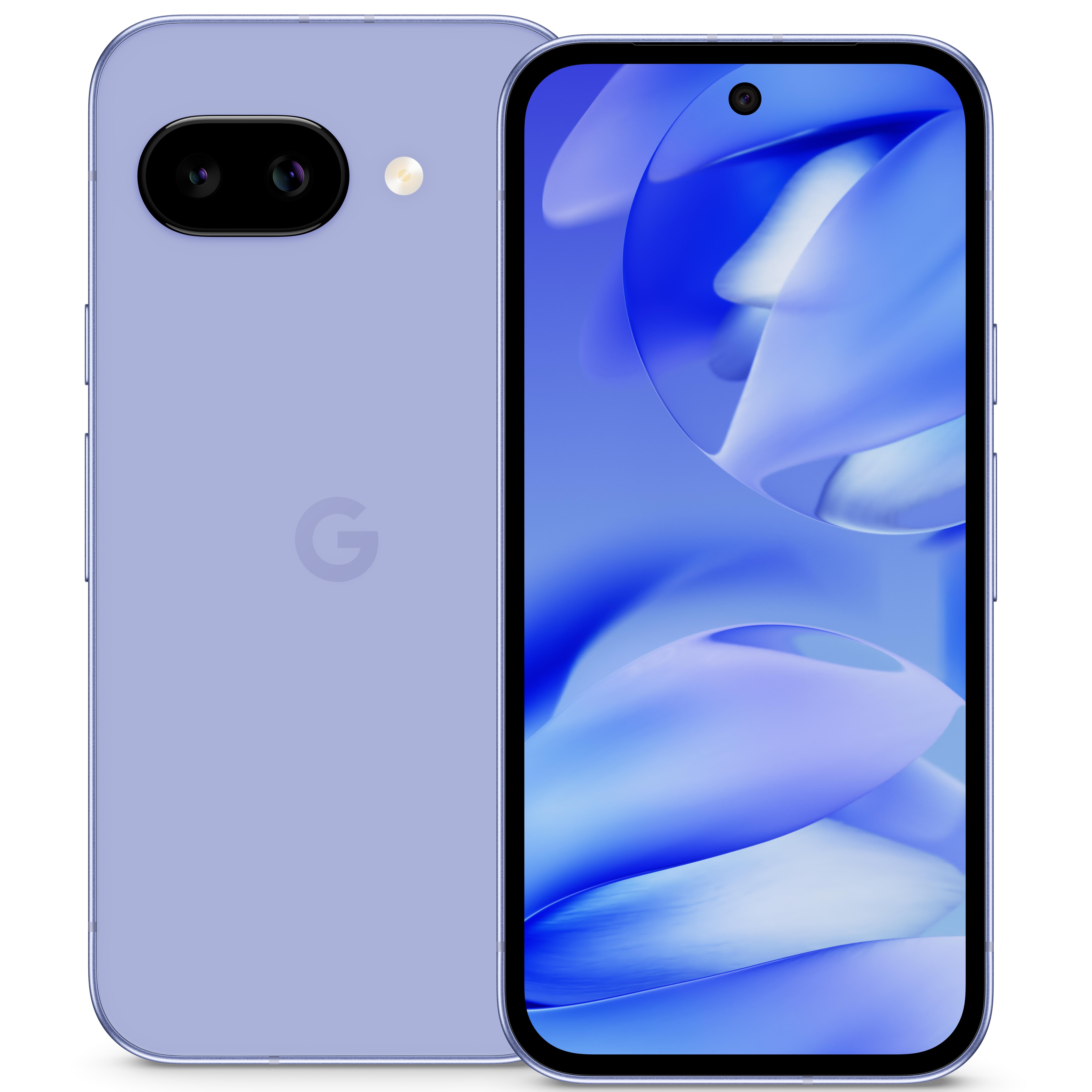
Best overall
Featuring a refreshingly premium design, top-of-the-line cameras, and loaded software with a laundry list of AI-based tools and much more, the Google Pixel 9a is arguably the finest phone you can get for $500.
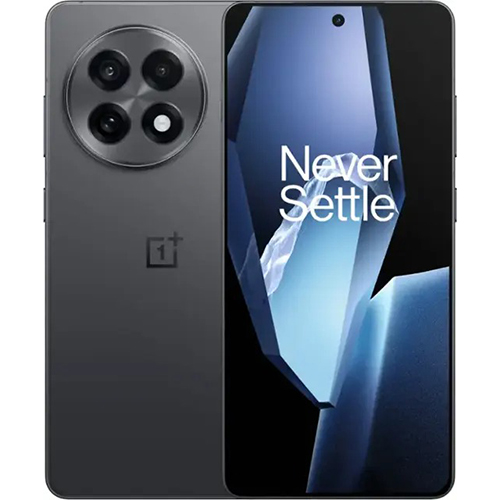
Best value flagship
Just like its predecessor, the OnePlus 13R offers some serious horsepower in its segment. It has flagship-level hardware, much improved cameras, and multi-day battery life with super-fast charging.
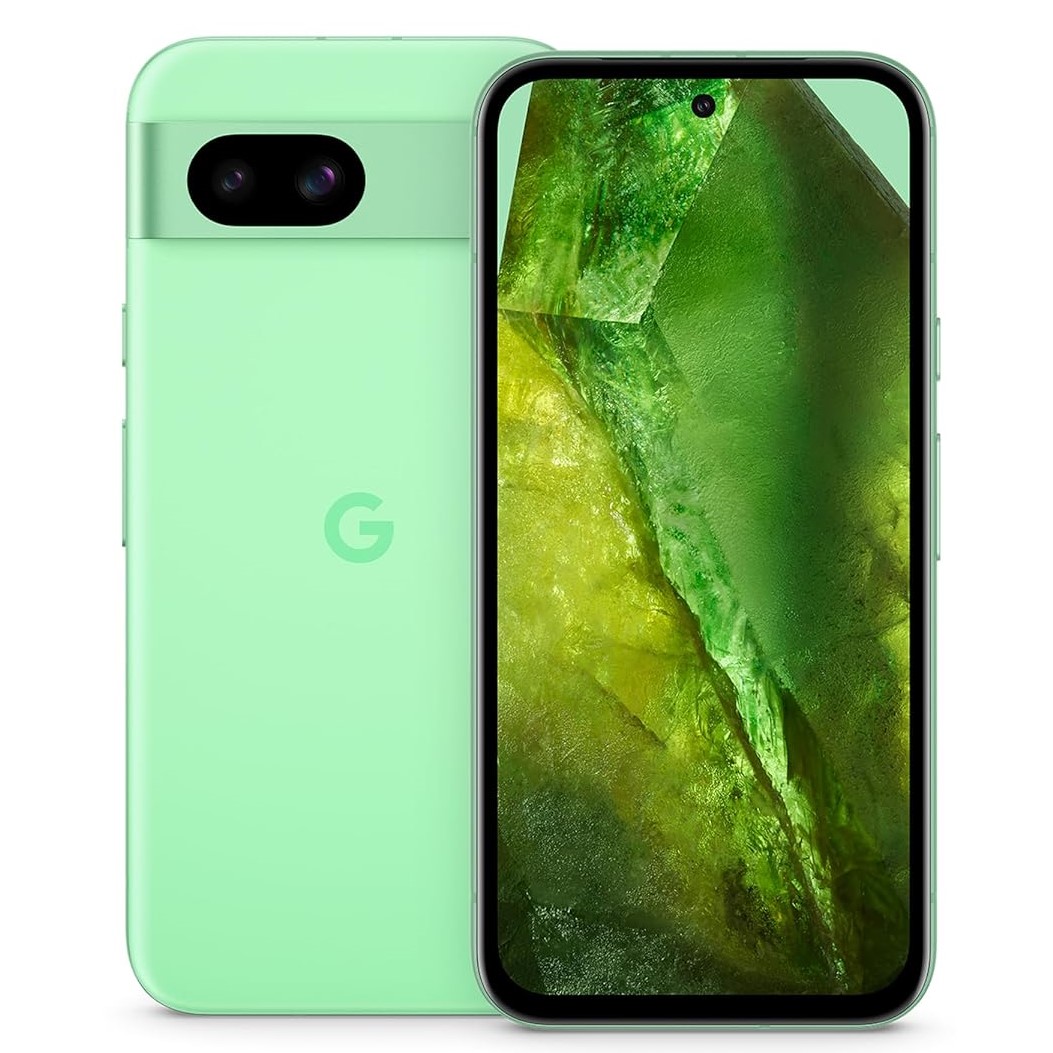
Best on sale
It may no longer be the newest thing out there, but the Google Pixel 8a still has just about everything you need, from great cameras to quality software. The fact that you can now get it at a cheaper price makes the option even better.

Best design
The Nothing Phone 3a features an eye-catching transparent back design and glyph lights, similar to the Phone 2a. For the price, it offers very good mid-range specs, a telephoto camera, and an IP64 rating.

Best for Galaxy fans
The best in Samsung's affordable A series, the Galaxy A36 boasts a stunning AMOLED 120Hz display, large 5,000mAh battery with 45W charging, and six generations of OS upgrades.
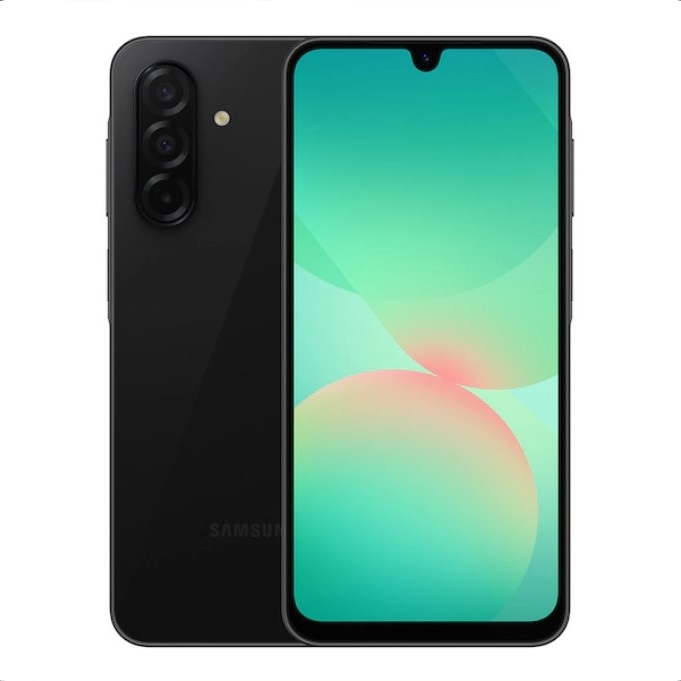
Best under $300
The Samsung Galaxy A26 is an excellent budget smartphone with a 120Hz AMOLED display, 50MP OIS main camera, and six generations of Android updates.
Load the next product ↓

Best under $200
You won't find more bang for your buck than with the Galaxy A16 5G. You get Android 14 with six generations of OS upgrades, an AMOLED display, decent cameras, and 25W fast charging. That's crazy-good value!

Best stylus phone
Relatively unheard of in this price range, the Moto G Stylus 2024 features a massive 6.7-inch 120Hz AMOLED display with a built-in stylus, plus a big 5,000mAh battery with 68W charging, and IP68 dust and water resistance.
Best overall

Specifications
Reasons to buy
Reasons to avoid
If you're in the market for a well-rounded Android phone and don't want to spend more than $500, I highly recommend getting the Google Pixel 9a as the best budget Android phone. It comes with several meaningful improvements over the Google Pixel 8a, despite having the same $499 starting price. Comparing the Pixel 9a vs. 8a, the area that has improved the most is battery life. The larger capacity can deliver nearly six extra hours of run time or an extra day if you use low-power mode. In other areas, the 9a's improvements aren't that drastic if you're thinking of upgrading from the 8a.
The Google Pixel 9a features a refreshed design, highlighted by a flat frame and a dual-lens rear camera array that's also flat and no longer sits in a protruding camera bar-a first for any Pixel smartphone. Up front, you get a slightly bigger 6.3-inch P-OLED screen that can now reach up to 2,700 nits of peak brightness. The result is a compact device that feels just as good to hold in the hand as it is to use, it not better.
Under the hood, the Pixel 9a comes with Google's Tensor G4, which is the same SoC that drives rest of the devices in the Pixel 9 family. The chipset, combined with 8GB of RAM and up to 256GB of onboard storage, is more than sufficient to handle whatever you throw at it without breaking a sweat. You get Android 15 out of the box, complete with Gemini and a boatload of AI-powered goodies, as well as Google's industry-leading (along with Samsung) promise of up to seven years of major OS and security updates.
As you'd expect from a Google smartphone (regardless of its price), the Google Pixel 9a has a dual-lens primary camera system that can take on some of the best Android camera phones out there. It's complemented by software-based tools such as Astrophotography, Face Unblur, and more. The whole package is backed by a much bigger 5,100mAh battery that can charge at up to 23W with the right charger, even if the 7.5W wireless charging leaves something to be desired.
Though a Google Pixel 10a is rumored for 2026, we'll still bet that the Pixel 9a remains a great value and worthwhile option for many years to come.
Attribute | Quick look | Score |
|---|---|---|
Display | Beautiful, bright, and snappy P-OLED panel | ★★★★★ |
Design | Premium design with a fully flat back | ★★★★★ |
Price | Not exactly cheap, but still an incredible value | ★★★★☆ |
Camera | Fantastic cameras, as you'd expect from a Pixel | ★★★★★ |
Performance | Tensor G4 delivers amazing daily performance | ★★★★☆ |
Battery life | Big battery but charging speeds are still a bit slow | ★★★★☆ |
Updates | Industry-best policy of seven years of OS and security updates | ★★★★★ |
Best value flagship

Specifications
Reasons to buy
Reasons to avoid
Dubbed the "definitive value flagship of 2025" by Android Central's Harish Jonnalagadda, the OnePlus 13R proves that a powerhouse smartphone doesn't have to cost a fortune. Yes, it does cost a bit more than its predecessor, but there are a lot of meaningful upgrades and improvements that make that price hike justified.
Featuring a flat 6.78-inch LTPO AMOLED panel, the OnePlus 13R makes everything from watching movies to playing games a delight. In true "flagship killer" fashion, the phone is driven by Qualcomm's Snapdragon 8 Gen 3 SoC and comes with at least 12GB of RAM and 256GB of UFS 4.0 storage. As you'd expect, this hardware allows it to make quick work of even the most demanding of tasks with little to no effort.
You get a much better triple-lens rear camera setup this time, with a 50MP primary sensor, a 50MP telephoto lens with 2x optical zoom, and an 8MP ultra-wide module. Although the secondary cameras are not the best, the setup is generally capable of shooting decent photos, except when there's not proper lighting.
Packing a huge 6,000mAh battery, the OnePlus 13R is a phone that you can comfortably use for two days on a single charge. There's 80W fast wired charging included too, although still no wireless charging. Running Android 15 (with OxygenOS 15 overlaid on top), the phone is guaranteed four years of OS updates and six years of security patches, so you should be able to use it for quite some time.
Yes, there's the follow-up OnePlus 15R, but you're still better off getting the OnePlus 13R, which offers better value and is overall the better phone of the two.
Attribute | Quick look | Score |
|---|---|---|
Display | Amazingly bright and large flat LTPO AMOLED panel | ★★★★★ |
Design | Squared off look feels premium, and the device is lightweight | ★★★★★ |
Price | Spectacular pricing that's still competitive, even with the hike | ★★★★★ |
Camera | Good primary lens but middling secondary cameras | ★★★☆☆ |
Performance | Old but gold and really powerful Snapdragon 8 Gen 3 chipset | ★★★★★ |
Battery life | Epic battery life with insane 80W charging | ★★★★★ |
Updates | Not the best but very good, with four years' major and six years' security updates | ★★★☆☆ |
Best on sale

Specifications
Reasons to buy
Reasons to avoid
Since it's no longer the latest and greatest model, the Google Pixel 8a can be had at a discounted price, making it one of the best cheap Android phones to buy. And that makes it an even more fantastic value than before. If you want a feature-laden Android phone at a reasonable price, I suggest you should certainly keep it under consideration.
The Google Pixel 8a comes with a 6.1-inch OLED panel that can hit up to 2000 nits of peak brightness. The 120Hz refresh rate makes everything appear smooth, even if the display isn't good for users who are sensitive to PWM flicker. The Pixel 8a is powered by Google's Tensor G3 SoC, which is still a very capable chipset that can handle everyday tasks without any troubles.
You also get 8GB of RAM and up to 256GB of internal storage. The phone comes with Android 14 out of the box, but it's backed by Google's commitment of seven years of major OS and security updates. And yes, you can expect lots of AI-powered features (e.g., Gemini, Circle to Search) to make the user experience even better.
Cameras have always been a highlight of Google's smartphones, and this one's no different. During my Google Pixel 8a review, I found the dual-lens rear camera array to be comparable to flagship phones costing hundreds of dollars more. If you use your smartphone as your only camera, you're going to love this thing. Other noteworthy additions include an IP67 certification for dust and water resistance, NFC, and a 4,492mAh battery with 18W wired and 7.5W wireless charging support.
Attribute | Quick look | Score |
|---|---|---|
Display | Beautiful, bright, and snappy P-OLED panel | ★★★★★ |
Design | Comfy soft corners and suitable for one-handed use | ★★★★★ |
Price | Fantastic now that 9a is out, even better on sale | ★★★★★ |
Camera | Spectacular Pixel cameras as expected | ★★★★★ |
Performance | Tensor G3 enables awesome AI features but not ideal for gaming | ★★★★☆ |
Battery life | Decent battery life but slow charging speed | ★★★★☆ |
Updates | An unbeatable seven-year update promise | ★★★★★ |
Best design

Specifications
Reasons to buy
Reasons to avoid
The Phone 3a is Nothing's second budget smartphone and carries the same quirky DNA as its predecessor. The fully transparent back panel, meticulous attention to detail, and the funky glyph lighting are some of the unique features that make it the best-looking phone in this segment. There's also a Phone 3a Pro this time, with a better telephoto camera.
In my Nothing Phone 3a review, I was mighty impressed at what the company has pulled off here. The 6.7-inch AMOLED display is pretty to look at, and colors and brightness levels are satisfactory. The see-through back panel looks classy and even though it doesn't have the same premium materials as you get with the higher-end models, it still maintains an excellent in-hand feel.
The Nothing Phone 3a has a big 5,000mAh battery with relatively fast 50W charging. The camera specs on paper are also quite good, and from what I tested, the triple-lens primary setup performs very well compared to the other phones in its class.
The only catch with the Nothing Phone 3a is that you can't buy it outright in the U.S. The company doesn't have any plans (yet) to put it on open sale. However, you can try your luck getting the 12GB RAM+256GB storage variant via Nothing's developer program for $379.
Attribute | Quick look | Score |
|---|---|---|
Display | Very thin bezels giving a high screen-to-body ratio | ★★★★★ |
Design | Uncommon see-through back with lights embedded inside | ★★★★★ |
Price | Extremely affordable for such a unique concept | ★★★★★ |
Camera | Pretty good compared to phones under $400 | ★★★★☆ |
Performance | Highly optimized with very clean Android and no bloatware | ★★★★☆ |
Battery life | Pleasing battery life and good charging speed | ★★★★☆ |
Updates | Alright promise, giving three years of OS and four years of security updates | ★★★☆☆ |
Best for Galaxy fans

5. Samsung Galaxy A36 5G
Our expert review:
Specifications
Reasons to buy
Reasons to avoid
The Galaxy A Series continues to be one of Samsung’s greatest achievements, with solid specs and nice designs on mid-range and low-end phones. A new entry for 2025 is the Galaxy A36 boasting of faster charging, improved specs, and much longer software support, making it the best budget Android phone in its segment.
The Galaxy A36 has a vibrant 6.7-inch AMOLED screen with a fluid 120Hz refresh rate alongside the ultra-efficient Snapdragon 6 Gen 3 SoC. You also get a big 5,000mAh battery with 45W charging, 6GB of RAM and 128GB of internal storage.
The cameras include a 50MP main sensor, 8MP ultrawide, and a 2MP macro. If you're after camera performance in a $400 phone, you'll want to look for deals on the Google Pixel 8a, but the A36 should be able to do just fine for casual photography.
As with all of the best Samsung phones, device longevity and security are the main selling points of the Galaxy A36. Samsung has pledged six generations of Android OS upgrades, which is incredible. It's also among the first A series phones to get a few Galaxy AI features which Samsung calls 'Awesome Intelligence.' I would strongly recommend the A36, not just for Samsung fans, but if you simply want a solid budget phone with long software support.
Attribute | Quick look | Score |
|---|---|---|
Display | Impressively vibrant OLED screen | ★★★★★ |
Design | Standard Samsung design | ★★★★☆ |
Price | One of the best phones under $400 | ★★★★★ |
Camera | Main sensor is surprisingly good with so-so secondaries | ★★★☆☆ |
Performance | Snapdragon 6 Gen 3 SoC can handle medium to slightly heavy gaming and multi-tasking | ★★★★☆ |
Battery life | Better than flagships, giving a good uptime | ★★★★☆ |
Updates | Samsung's six-year promise is very good | ★★★★★ |
Best under $300

6. Samsung Galaxy A26 5G
Our expert review:
Specifications
Reasons to buy
Reasons to avoid
The Samsung Galaxy A26 5G gets a much-needed upgrade from the Galaxy A25 with the addition of IP67 water and dust resistance. The phone is now powered by Samsung's Exynos 1380 SoC and is offered is various RAM and storage configurations (location dependent). It comes with a large 6.7-inch Full-HD+ AMOLED panel with a 120Hz refresh rate. You also get expandable storage, but the microSD slot is shared with the second SIM slot.
The Galaxy A26 5G runs One UI 7 which is based on Android 15, and Samsung has promised six years of OS updates for it. Although the phone has a large 5,000mAh battery, the charging speed is limited to 25W. One big inclusion is optical stabilization for the main 50MP camera, which is good to see at this price point. You also get an 8MP ultra-wide module and a 2MP macro unit on the back, along with a 13MP lens for all those selfies and video calls.
Attribute | Quick look | Score |
|---|---|---|
Display | Not the best but still an AMOLED is an AMOLED | ★★★★☆ |
Design | Gorilla Victus Plus for front and back, along with IP67 rating | ★★★★☆ |
Price | Very accessible price point | ★★★★★ |
Camera | Only the main camera is worth anything | ★★★☆☆ |
Performance | Exynos 1380 chipset can't handle heavy-duty apps | ★★★☆☆ |
Battery life | Gigantic battery as expected of a good budget phone | ★★★★★ |
Updates | Six-year guarantee with timely updates | ★★★★★ |
Best under $200

Specifications
Reasons to buy
Reasons to avoid
Samsung offers a lot of smartphone for $200 with the Galaxy A16 5G, making it the best cheap Android phone for your kids' first phone. A couple of things have been improved from the Galaxy A15 5G which used to be on our list, such as a better waterproofing, the new version of Android, and longer software upgrades.
The 6.7-inch AMOLED screen on the Galaxy A16 has a Full-HD+ resolution, so icons and text end up looking decently sharp. Colors are also vibrant and punchy, making the panel great for binge-watching videos. The Exynos chipset can handle basic apps well enough, but the problem is the stingy 4GB of RAM, which tends to make app-launching and multitasking painfully slow. Thankfully, a microSD card slot is supported for expanding the 128GB of onboard storage.
The cameras on the Galaxy A16 5G are similar to the A15. You should expect similar performance from the main 50MP snapper and the ultrwide cameras. Battery life is one of the main highlights of this smartphone. The 5,000mAh battery can easily get you through one full day, and maybe more depending on the usage.
For more options in this price range, check out our guide to the best Android phones under $200.
Attribute | Quick look | Score |
|---|---|---|
Display | 90Hz AMOLED under $200 is unheard of | ★★★★★ |
Design | Same old boring and unremarkable design | ★★★☆☆ |
Price | You don't even need two Benjamins, 'nuff said | ★★★★★ |
Camera | Decent main camera but the other sensors are trash | ★★★☆☆ |
Performance | The Exynos silicon is average at best | ★★☆☆☆ |
Battery life | Superb 5,000mAh battery with 25W charging | ★★★★★ |
Updates | Six-year promise is amazing for the price | ★★★★☆ |
Best stylus phone

Specifications
Reasons to buy
Reasons to avoid
It can be challenging to keep track of all the value phones Motorola has in its line-up, but one that manages to stand out is the new Moto G Stylus 2025. Along with being one of the few Android phones that come with an integrated stylus, I think it's also a near-perfect combination of specs, features, and overall value.
You're getting a large 6.7-inch pOLED screen that looks incredible, and thanks to the 120Hz refresh rate, feels a lot more premium to interact with as well. That premium feel is further enhanced by the vegan leather back which we love. There's also ample performance, thanks to Qualcomm's Snapdragon 6 Gen 3 chipset, along with 128GB of internal storage and a big 5,000mAh battery. And given the phone's modest price tag, these are all impressive specifications.
As the name implies, the main draw for the Moto G Stylus 2025 is its integrated stylus. It's certainly not the most premium stylus we've ever used, but it works quite well enough for drawing, note-taking, and similar tasks. It can be stored seamlessly at the bottom of the phone when not in use, which is a nice touch that ties the whole experience together. We expect to see a Moto G Stylus 2026 next year, so stay tuned. But even so, that might mean the Moto G Stylus 2025 comes down in price, and it remains a solid budget option.
Attribute | Quick look | Score |
|---|---|---|
Display | Nice and large OLED panel but awkward in-screen fingerprint sensor | ★★★★☆ |
Design | Stylus input and headphone jack are gems in this day and age | ★★★★★ |
Price | Phenomenal value for money | ★★★★★ |
Camera | Not bad at all, all things considered | ★★★★☆ |
Performance | Snapdragon 6 Gen 3 punches well above its weight class | ★★★★★ |
Battery life | Incredible uptime and fast 68W charging beats Samsung | ★★★★★ |
Updates | Only two measly Android updates | ★☆☆☆☆ |
Other products we tested
Between the tens and sometimes hundreds of devices my team and I extensively test each year, the competition gets real tough, real fast. As such, there are several other affordable phones that we have tested but couldn't include here, simply because they didn't make the cut for our top rankings.
However, some devices still deserve shoutouts. These smartphones deserve at least honorable mentions because they're just that good, but didn't get ranked by us due to one or two small (but important!) reasons.
For example, Xiaomi, Vivo, Honor, and OPPO phones are so good, but very difficult to recommend to North American residents as they don't work on CDMA networks and aren't officially sold in the region. This doesn't take away from the fact that these brands still make awesome cheap Android phones!
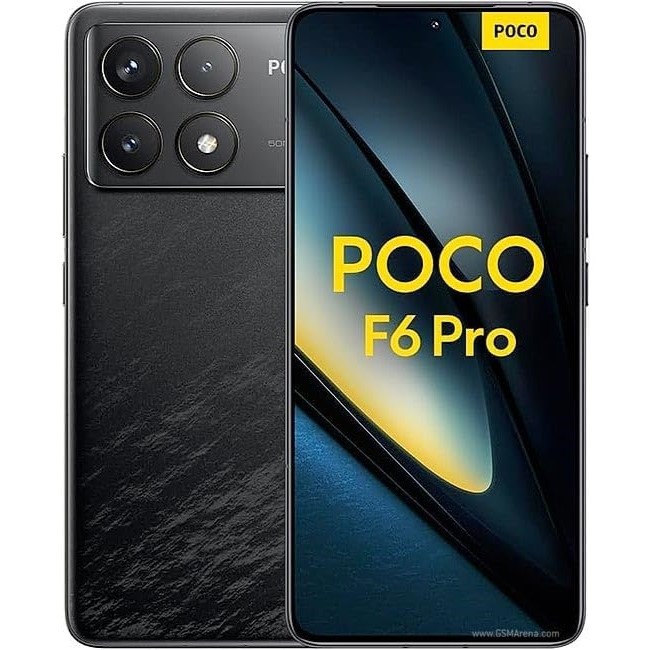
Most underrated cheap phone
My colleague Harish Jonnalagadda called the POCO F6 Pro the most underrated phone of 2024. For roughly $480 to $450, you get unmatched value. It's driven by Qualcomm's Snapdragon 8 Gen 2 chipset, comes with 12GB to 16GB of RAM, and starts with 256GB of storage, going all the way up to 1TB. The phone has a beautiful 6.67-inch QHD+ 120Hz AMOLED screen, as well as superb battery and charging specs. The only thing you miss out on is long-term software updates, although Xiaomi-owned POCO's three-to-four-year guarantee isn't half bad.
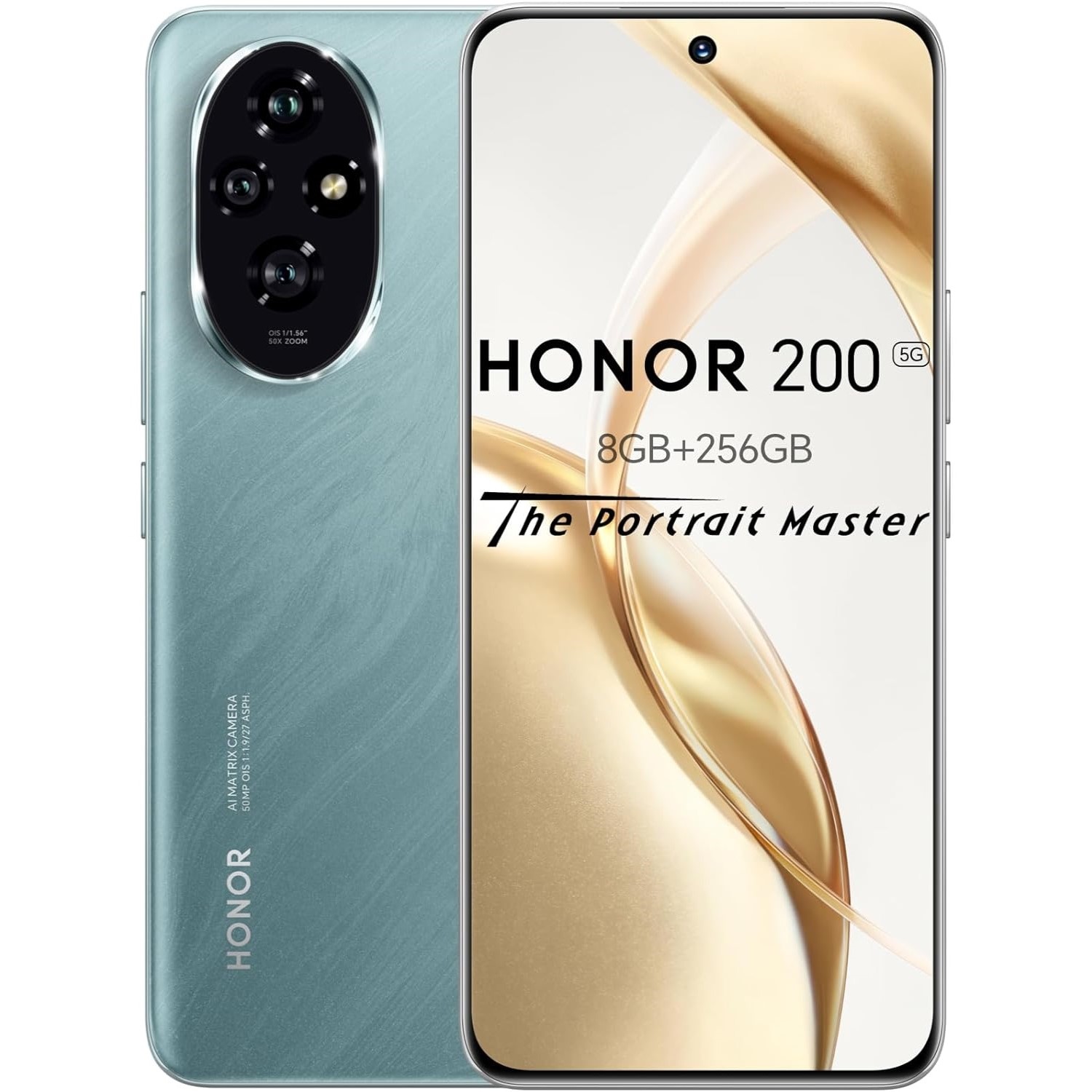
Sleekest design
The Honor 200 costs around £299 in the UK, which equates to about $390. It is probably the slimmest phone on this list, measuring an ultra-thin 7.7mm. But don't let that waistline fool you, because this phone isn't just a pretty face. This budget buster sports the hearty Qualcomm Snapdragon 7 Gen 3 SoC, a lovely 120Hz OLED panel, and 100W fast charging. Not to mention the cameras are pretty darn great too.
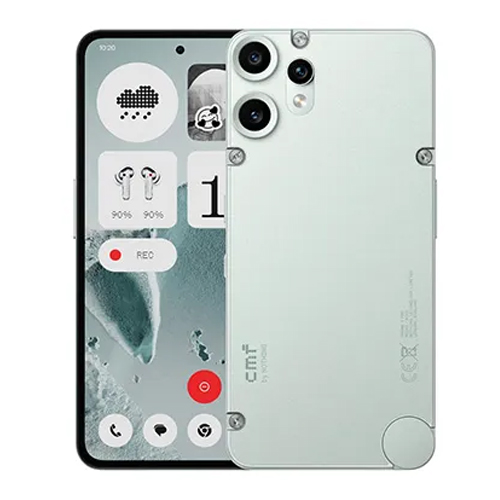
All your essentials
The CMF Phone 2 Pro is a steal given all the features you get, including deep AI integration, Essential Space and Essential Key for organizing your planning and thoughts, great cameras, and fun modular accessories. It's under $300 but feels more like a $500+ phone. The downside? It's only available in the U.S. through a limited beta.
FAQ
Why are unlocked phones cheaper?
Unlocked phones aren't necessarily cheaper than carrier-locked phones, they're just subject to different types of promotions. Locked phones purchased through your mobile provider, for instance, may be discounted heavily when you add a line to your service account, while unlocked devices may score straight discounts through retailers like Amazon and Best Buy. To maximize your savings when buying a new phone, it's best to check both traditional retailers and your wireless provider to see what options are available.
Are Android phones cheaper than iPhones?
Yes! Although Android phones can vary wildly in price, the cheapest Android devices are generally much more affordable than the cheapest iPhone. This is primarily due to the large number of brands that produce Android phones and the overall brand recognition attributed to Apple.
How much is a cheap Android phone?
When we're talking about cheap Android phones, we're generally referring to mobile devices that retail for less than $500. These budget-friendly phones generally provide flagship-level specs and a lot of the same features found in their more-expensive counterparts. You can also find Android phones under $300 and phones under $200, but quality tends to decline the cheaper you go. I consider $400-$500 to be the sweet spot when it comes to cheap phones, but there are quite a few solid devices that go for much less.
Where can I buy a cheap Android phone?
When shopping for cheap Android phones, it's best to compare prices from both traditional retailers (Amazon, Best Buy, Walmart) and your wireless carrier before you commit to one product. You can also save a ton of money by ordering refurbished devices through retailers like Backmarket.com. Samsung also has a Certified Re-Newed program that sells professionally-refurbished Galaxy phones with warranties and new components. These devices are generally much more affordable than new phones but perform like brand new tech.
Are cheap Android phones reliable?
Why you can trust Android Central
The words 'cheap' and 'reliable' don't usually go in the same sentence but in the world of Android phones, you can safely buy cheap phones as long as you stick with reputable brands. Top smartphone companies like Motorola, Samsung, Google, OnePlus, and Nothing, all offer high-quality cheap Android phones that work well and last for a long time, if used carefully.
These best budget phones also receive very good after sales support, so if you need to replace the battery or a cracked screen, you should be able to find a service station near you to get this done quickly. Samsung, Motorola, and Google have a massive presence in the U.S., while OnePlus and Nothing are expanding their base.
What are the main compromises with budget Android phones?
Modern cheap Android phones are quite feature-packed and offer plenty of premium features like certified water resistance, wireless charging, multiple array of cameras, and fast charging technology. You won't really find many features that are missing here, but instead, the compromises are more to do with the quality of features.
For instance, cameras are usually the biggest area of compromise as cheap Android phones don't always have the same level of camera sensors as flagships. The Pixel series being an exception, you might have some phones like OnePlus 13R with flagship sensors, but secondary sensors will usually have inferior sensors. This is to be expected since these phones are built to fit into a lower price segment.
Other areas where you can expect some compromises would be build quality (plastic vs. metal or glass), display specs (lower-grade AMOLED panels or IPS displays with lower brightness levels), shorter term software update support although this is changing rapidly.
How to choose
What is the best cheap Android phone to buy?

Without a doubt, the Google Pixel 9a is the best phone under $500. But fortunately, we're living in the day and age that's full of excellent and affordable smartphones. So, the question is, how should you choose a cheap Android phone?
Most people have a budget, and that mighe be the first aspect to inform your decision. You're going to want to pick a phone that’s not just in your budget, but one that will last a while, too. That way, you won't end up spending even more on yet another phone upgrade shortly down the road. A $500 phone you have to replace in two years isn't a better value than a $1,000 one you can keep for four or more.
But before you even think about a phone’s hardware, cameras, or storage space, you need to think about connectivity. All modern phones support Bluetooth earbuds and Wi-Fi, but not all phones support all cellular networks. Make sure the phone you’re looking for supports your network of choice, especially if you are picking an unlocked phone from the list.
The quickest way to end up with a phone that feels sluggish and old is to undersell yourself on the phone’s chipset.
Next, keep a phone's SoC in mind before clicking that buy button. The quickest way to end up with a phone that feels sluggish and old is to undersell yourself on the phone’s chipset.
Lots of phones feature Qualcomm’s Snapdragon chipsets, but that doesn’t mean all of them are worthwhile. Unless your budget absolutely doesn’t allow for anything faster, you probably want to avoid any phone powered by a Snapdragon 400-series or lower processor. Those phones are really only good as communication devices and for browsing the web or social media.
Likewise, MediaTek’s Dimensity series of processors are the only ones you want to consider from the company. Phones like the TCL Stylus 5G—which is only available with T-Mobile—sports the excellent MediaTek Dimensity 700 5G, which is powerful enough for just about anything you throw at it.

Storage isn’t much of a concern these days thanks to excellent cloud storage services like Google Photos.
You’ll also want to make sure your new phone has at least 6GB of RAM if you’re ever planning on doing more than one thing at a time on it. Less RAM means the phone has less memory to store opened apps, creating a scenario where apps take a long time to load and often have to reload if you switch back and forth between apps.
Storage isn’t much of a concern these days, thanks to excellent cloud storage services like Google Photos, which can offload the photos and videos you’ve taken to a safe and secure cloud storage. That means they not only won’t be taking up the precious space on your smartphone, but they’ll also be securely backed up in case something happens to your smartphone.
Services like Google Photos also archive your photos and make it easy to search for even the most minute details, like your old black and white cat or the blue shoes you wore to that wedding several years ago.
With a few exceptions, the cameras on the phones above will all deliver a good experience in most lighting conditions.
Cameras on smartphones have become increasingly important over the years, and, with a few exceptions, the phones above will all deliver a good experience in most lighting conditions. As these are less expensive phones, you’ll need to be aware that most models will only take great pictures in adequate light. Phones like the Google Pixel 9a or OnePlus 13R offer great low-light support, and that function is becoming more common on phones even under $300 these days.
No phone on this list has poor battery life, but some folks might have a unique need for a smartphone to last more than a single day on a full charge. We’ve noted that several options above will offer that but specifically highlight one phone as having the best battery life of them all.
The bottom line on cheaper Android phones
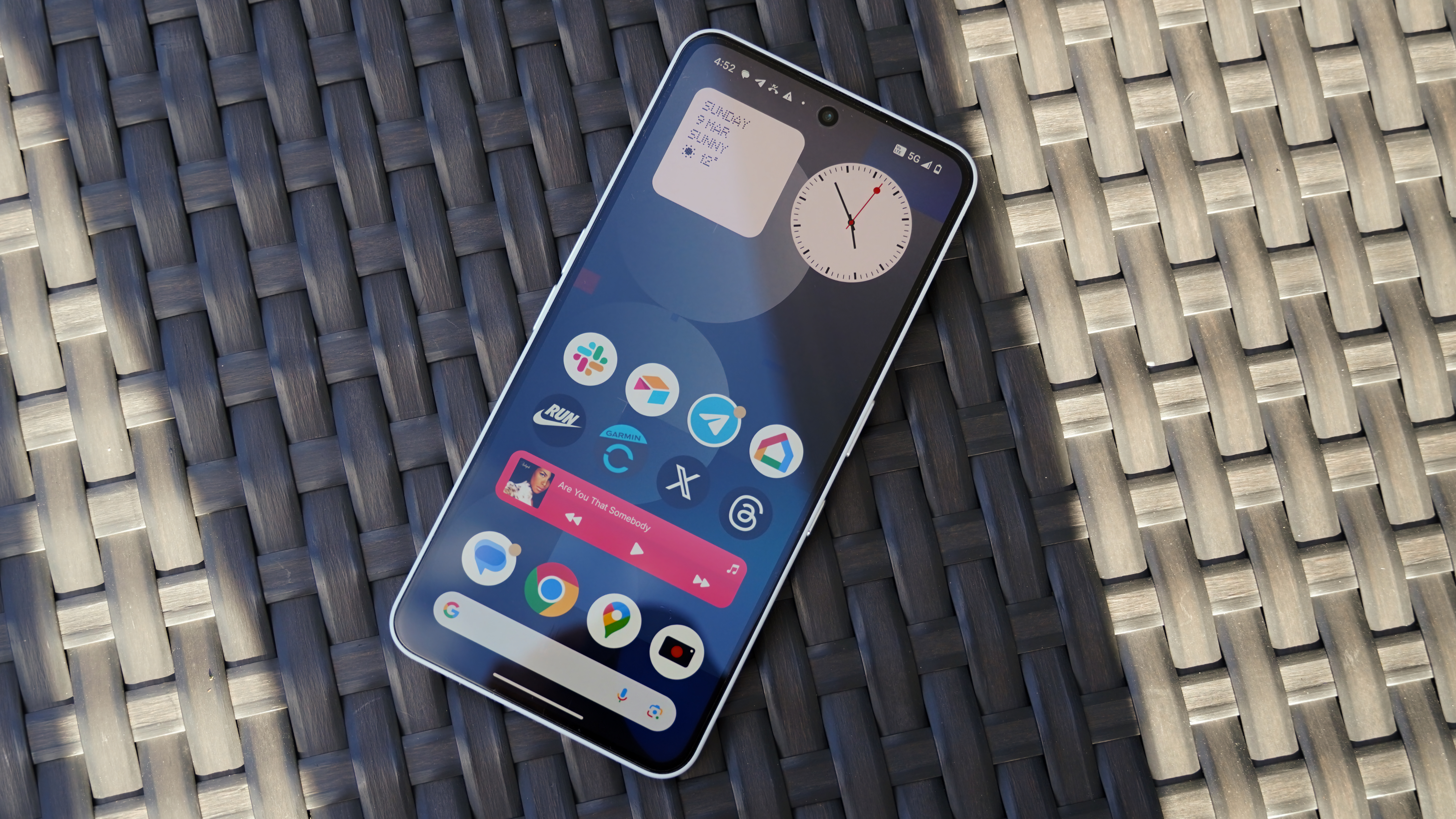
Most Android phones these days are pretty good, but a few stand above the rest. I've outlined many of my favorites here but if you want a few more options and are on a tighter budget, I've got picks for the best phones under $300 and the best phones under $100. Each of these categories comes with a few concessions, but if you're looking for a specific niche, like a stylus, you'll find a few more options there.
Just remember, though, that you're paying hundreds less than what it costs to buy a Samsung Galaxy S25 Ultra or Pixel 9 Pro. While those phones might offer faster hardware, better cameras, or brighter displays, they're also extremely expensive to replace if they accidentally get broken. Splurging on the best overall phone that has everything, and the kitchen sink isn't always the ideal solution, especially when you're looking to cut costs.
How we test
☑️ One of the oldest and most trusted Android sites on the web
☑️ Over 15 years of product testing
☑️ Thousands of products reviewed and tested since 2007
☑️ Over 50 phones tested every year by our team
We don't just turn on a phone, set it up, and make sure it works while testing it. Android Central goes the extra mile to properly review a device, whether that requires taking pictures in heavy rain or testing cellular reception in remote areas.
Our reviews involve putting a device to a proper test, recording performance benchmarks and making sure that those benchmarks and numbers translate to a matching real-world user experience. We're not just testing devices; we're using them as any other person would in their day-to-day lives.
This is why you can rely on us when we recommend a cheap Android phone that's priced below $500. You best believe that several of our team members have spent hundreds of hours using each of the phones that we recommend with all our hearts. We even check consistency, taking months to review a single phone if that's what it takes to fully understand the value of the device.
If you're more interested in finding out about how Android Central tests and reviews phones, you can read up on it
Get the latest news from Android Central, your trusted companion in the world of Android

- Christine PersaudContributor
- Roydon CerejoContributor
- Brady SnyderContributor
- Namerah Saud FatmiSenior Editor — Accessories
